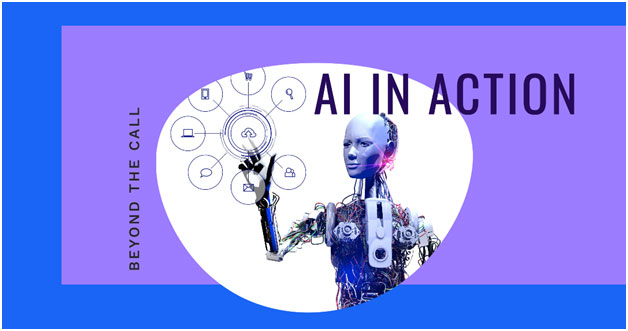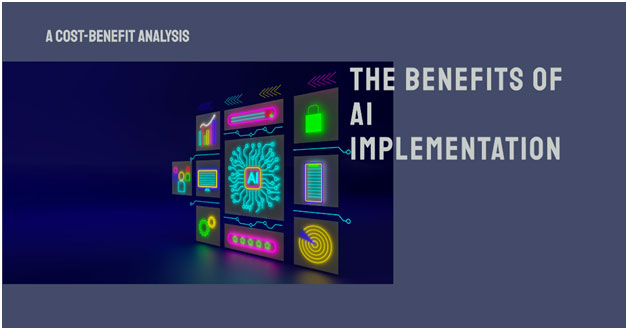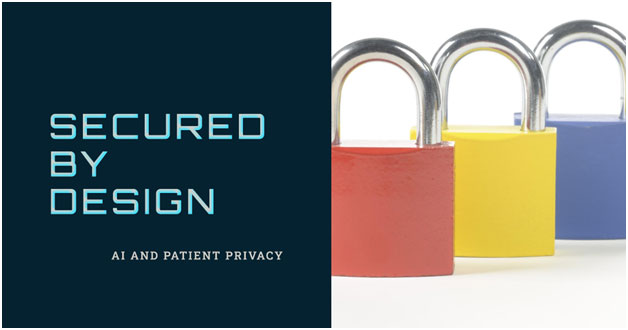Transforming Customer Service

Image by MS Design
Artificial intelligence has the potential to transform customer service in your business while delivering “Wow” experiences for your guests. We’ll discuss how AI can be a practical tool in helping the daily tasks in your office or business move along with less effort by your important, busy employees. You’ll also learn how AI leads to increased customer satisfaction, which also helps create what many businesses dream of with loyal customers. Let’s explore what AI can do and how it’s done.

Image by MS Designer
What Is Artificial Intelligence Within Customer Service
While many thoughts have been spoken about the role of artificial intelligence in business, some of them are negative. AI can be truly helpful both to a business and a customer when it is built and used correctly.
Most businesses think of customer service as the times we contact a business, like a doctor’s clinic, dentist’s office, or chiropractic practice, to interact with them to make an appointment or ask a question. AI can readily fulfill that need with a level of predictable response to the questions you know many customers will ask. You’ll love that AI is also up to the task of doing the little things, like call reminders, that help customers remember to come in at a certain date and time.
While it may sound like an easy task, your office isn’t always well-equipped to remind people, and people forget all the time. The idea behind using AI for your customer service endeavors can be as simple as ensuring customers show up on time more often – or reducing the workload within your practice.
For many practices, the most important part of having solid customer service is the effect of no-shows on their bottom lines. Having patients not show up means the practice can’t bill, and no one else can take the spot. That’s a problem and one that got worse after the beginning of the 2020 pandemic when no-show rates for some hospitals and doctor’s offices rose from about 7% to north of 10%.
Whether patients forgot about appointments due to a gap of time between appointment creation and the appointment time itself, or they decided later that they wanted to reschedule or cancel and didn’t reach out, a reminder could help push them to communicate with the office. This helps the office keep that revenue, and customer loyalty.

Image by MS Designer
What Are the Benefits of AI Within Customer Service
What, then, are the benefits of using AI in customer service? We’ve discussed some of the issues offices like yours have; let’s talk about solutions and examples. One case study suggests a rather high no-show rate for some health systems, which is over 40%. This makes the doctor’s office alarmingly inefficient.
Ideally, AI can fulfill the role of reaching out to a patient, providing a gentle reminder that their appointment is coming up, and then asking whether they plan to keep the appointment. The idea behind is that problems do arise with patients, like scheduling conflicts, or just feeling healthier, that keep them from notifying your office and ultimately becoming a no-show.
How Machine Learning Helps with Appointments
AI, however, can be trained in what to do in these scenarios – and it can absorb and use data in a process called machine learning. We spoke of statistics about how often people don’t show up to the doctor’s office for any variety of reasons – and it could certainly use some improvement. When you teach AI to understand your goals, like a low no-show rate, it then begins to try to help make that happen, for example. AI can figure out the best times to reach out to a patient – including weeks, days, and hours before the appointment to the most optimal effect. This might end up not being exactly three hours for the appointment but at a different specified time.
Avoiding Overwhelming Your Patients
Plenty of people have complained about how often doctors and clinics reach out to confirm appointments. CNN recently wrote a news article about the issue of appointment spam. While it’s appreciated that a news network discusses the problem, much of the communication that comes out of a doctor’s office is done to avoid losing revenue on people who won’t communicate. The effect can mean that a system that is not powered by AI can take communication a little too far and text or call too frequently.
This is where machine learning comes in. Only communicate as often as you’ve learned how to, then the computer system adjusts to what tends to work without blindly sending out texts that will overwhelm the patients.
Help, 24/7 and Chatbots
When the day finally winds up, and a patient needs to contact you about making or keeping an appointment at an odd hour, don’t leave them hanging. This is where chatbots can also help. Chatbots can be designed to offer basic questions and answers as well as attempt to understand natural language and provide an answer. Natural language means that the chatbots understand a written query like “What kind of insurance do you take?” without being able to select it from a menu – customers can make up their questions with good natural language programming!
Our suggestion here is to pre-program your chatbot to answer some basic questions and include some not-so-commonly-answered questions too. These kinds of conveniences do make people want to come back because they know that your whole customer service environment is truly designed to help.
Setting Up AI
One major concern is setup. We can honestly say that one of the easiest ways to make AI work is to recreate an ideal conversation between a patient and your office, including the questions you and your patients tend to ask. You can then determine your common answers and work with customer service within your AI platform to ensure proper delivery.
You’ll also want to lay out your ideal customer service scenarios – including how customers contact you and how you contact them. This will be crucial in making sure that customers are satisfied no matter how they reach out.

Image by MS Designer
Costs and Return on Investment Within AI
We’ve talked about what AI can do and how machine learning learns about your business. Aside from making sure patients with appointments show up and contribute to your revenue, what does AI cost? While the cost varies, we do have to add a benefit that will make you rethink your return on investment:
What if your team of people you pay an hourly or yearly salary didn’t have to pick up the phone to ensure customers come in? What if, instead, they could contribute to other parts of the business and curb other problems within your clinic? One big benefit to AI is that with fewer manual tasks floating around for everyone to do, they have the chance to dig deeper into other important tasks where humans excel, like interacting with patients who are physically present.
Implementing An AI Helper In Your Practice
We’re sure you have more than a few computers and programs within your practice that all at least try to work together to pass information back and forth properly. A good AI reminder system integrates well with those without you having to do much. These programs and apps are often designed and built to share information, and it’s just a matter of doing so privately and securely.
Overall, the best possible beginning for subscribing to and using a text or call reminder program is to reach out to a reputable, well-reviewed provider and discuss your options.
Who Can Train Us For AI?
The good news here is that AI isn’t difficult to use. Once you learn it and understand it, you’ll find you are saving significant amounts of time. You’ll also have customer service available to you.
We suggest training at least a couple of people to modify AI. They’ll want the program on their computers and smartphones. The leaders of this process will also appreciate that the information can be accessed anywhere they like and that they can turn off notifications.
Training for AI will be easier than you thought, and you’ll appreciate the results.

Image by MS Designer
Privacy, Security, and AI
Privacy and security within a medical office are very important. While you should already know not to discuss patient information without authorization, how do you prevent your computer and messaging systems from doing something weird? The answer is simple: reminder systems have security built-in that prevents anyone else from receiving the information being sent. Reminders are vague and are limited to telling you when and where your appointment takes place. They are HIPAA-compliant and don’t discuss health conditions that even someone sneaking a look at your phone could read.
Patients can also opt out, of course, meaning that they don’t need to receive the reminders if they don’t want to. While the legal requirement for opt-outs is by no means limited to AI-powered reminders, we must respect customers’ wishes.
What If Customers Don’t Like AI?
Some customers are accustomed to getting a personalized phone call from the clinic itself or just like the idea of keeping their calendar because it works for them.
Here is our suggestion: Gently introduce the idea of having an automated reminder phone call or text, or don’t bring it up. Thankfully, this software tends to be flexible, meaning that a customer isn’t required to opt in if they prefer their communication another way. For data and privacy concerns, not having a human being on one end speaking aloud in an area where someone else can hear them might benefit them so that AI can be more private!
An effective interaction could include asking a patient if they would like appointment reminders and suggesting they opt out of them if they prefer not to receive them. We wouldn’t suggest bringing up information about AI while having these discussions, as most customers won’t care.

Image by MS Designer
Conclusion
AI can readily help bridge the gap between having an overly busy office or practicing with customers frequently no-showing and developing the customer loyalty you need to continue to drive your business while not stressing out employees. A call reminder system takes machine learning and applies it to your business so that patients can be notified about upcoming appointments in a meaningful but discrete manner without interrupting your day.
We also encourage you to share your stories with us! We’d like to hear about the successes and challenges of implementing an AI text reminder for your customers. What happened to your no-show ratio? Was everyone happy? Please do share!